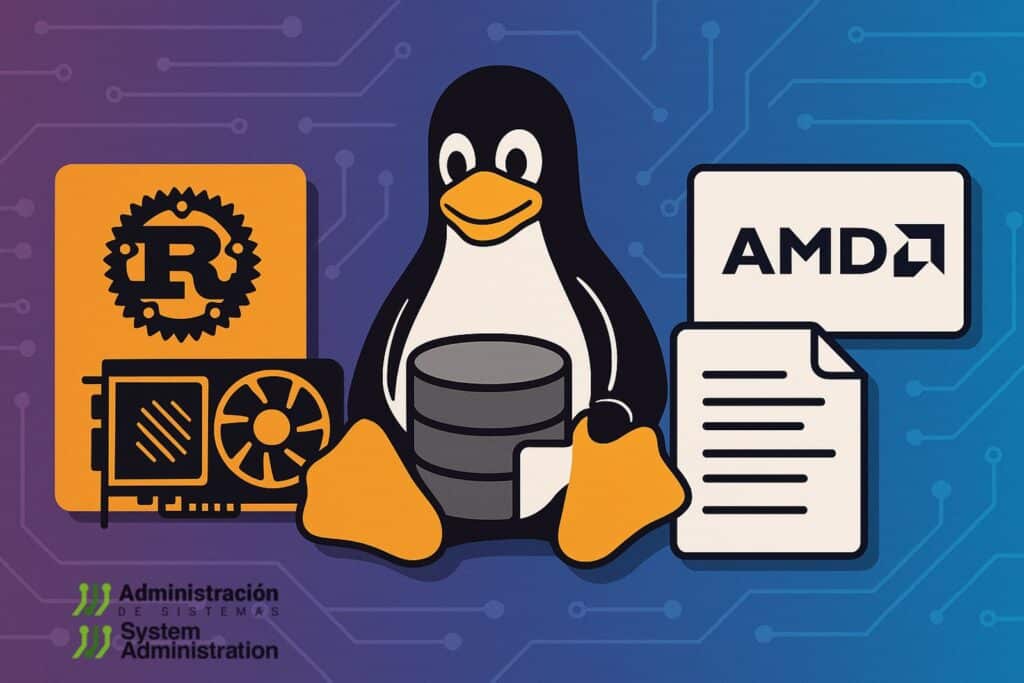The latest Linux kernel release introduces Nova, a new GPU driver written in Rust, along with significant improvements to Btrfs, exFAT, AMD and Intel support.
Linux continues to evolve at a steady pace with the release of Linux kernel 6.15, marking another milestone in performance, reliability, and hardware compatibility. Although this is a non-LTS release—with a short support cycle of approximately 9 to 12 weeks—it brings substantial technical progress, especially in areas like GPU drivers, filesystems, and CPU platform integration.
The release was slightly delayed due to a last-minute bug, as Linus Torvalds explained:
“This was delayed by a couple of hours because of a last-minute bug report resulting in one new feature being disabled at the eleventh hour, but 6.15 is out there now. Apart from that final scramble, things looked pretty normal last week. Various random small fixes all over, with drivers as usual accounting for most of it.”
Nova: A New Rust-Based Driver for NVIDIA GPUs
One of the most talked-about features in Linux 6.15 is the introduction of Nova, a Rust-based open-source GPU driver for newer NVIDIA graphics cards, developed by Red Hat engineers.
Nova is designed as a future replacement for the aging nouveau driver. It follows a GSP-only (GPU System Processor) model that simplifies complexity and improves modularity. The driver currently targets RTX 2000 series and newer GPUs, laying the groundwork for modern, community-supported NVIDIA graphics on Linux.
Filesystem Improvements: Btrfs, exFAT, and FUSE
Linux 6.15 introduces major enhancements across various filesystems:
- Btrfs now supports real-time Zstd compression with levels ranging from -1 to -15, making it significantly faster and more space-efficient.
- exFAT sees notable performance gains during file deletions, especially with large file sets, improving responsiveness on flash drives and SD cards.
- FUSE (Filesystem in Userspace) now allows filename lengths of up to 4.096 characters, and initial groundwork has been laid for large atomic write operations, which are expected to enhance data integrity in filesystems such as XFS and ext4.
AMD Enhancements: Zen Instructions and Energy Efficiency
This kernel release introduces support for the INVLPGB instruction, part of AMD’s newer Zen architecture. It accelerates memory management tasks by enabling efficient invalidation of outdated page entries across CPU cores—beneficial in parallel workloads.
The AMD P-State driver also receives improvements, optimizing CPU frequency scaling to boost performance while reducing power consumption. Additionally, early support for AMD’s Versal NET hybrid SoCs has been added, paving the way for adoption in networking and embedded applications.
Intel Updates: Raptor Lake and GPU Monitoring
For Intel, Linux 6.15 includes support for Raptor Lake-S processors within the EDAC (Error Detection and Correction) subsystem, enhancing the system’s ability to identify and respond to memory errors.
The Intel Xe graphics driver sees several enhancements, notably the addition of Shared Virtual Memory (SVM) to improve CPU-GPU collaboration. Developers and system administrators will also benefit from new tools for monitoring GPU performance metrics.
A Forward-Looking Release for Linux
While Linux 6.15 won’t be maintained long-term, it provides a glimpse into the ongoing modernization of the kernel. From integrating Rust-based system components, to refining power management, to enhancing hardware support from leading silicon vendors, this release reflects a commitment to future-proofing the Linux ecosystem.
Early adopters and developers can find the full source code and patch details at the official list kernel.org website. As usual, the release will first roll out to bleeding-edge and rolling-release distributions, before potentially being adopted by enterprise platforms in later cycles.

